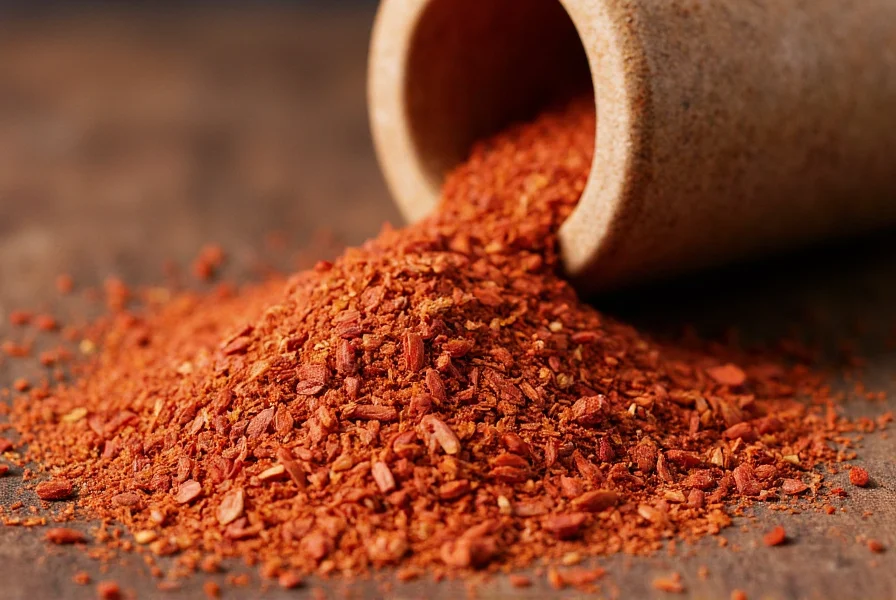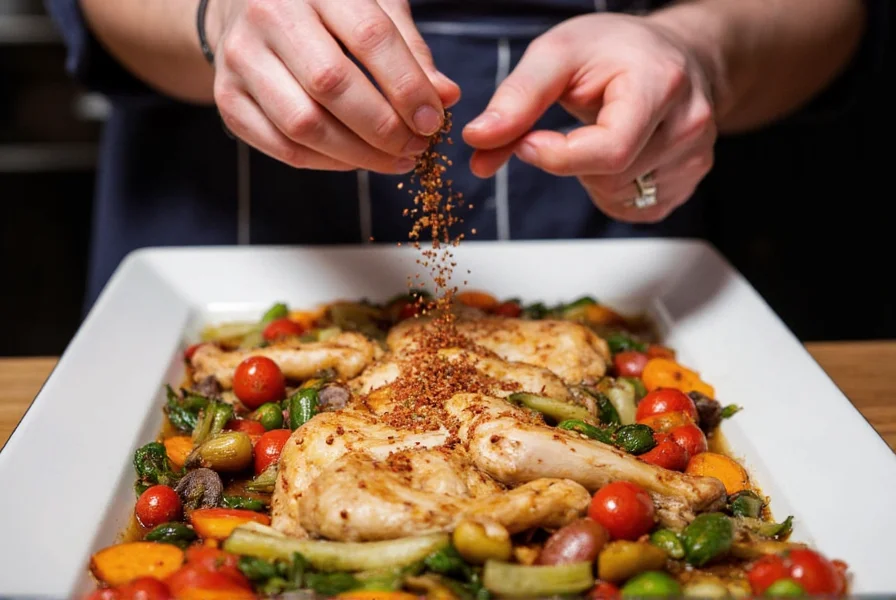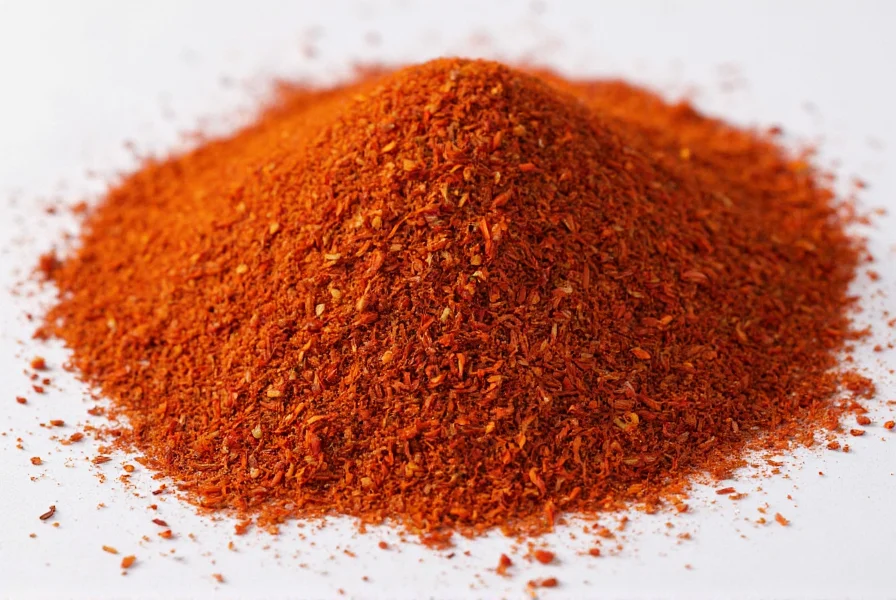Aleppo chili flakes have gained international recognition as a versatile culinary ingredient that elevates dishes with nuanced heat and depth. This distinctive spice represents more than just a seasoning—it's a cultural artifact with deep roots in Middle Eastern cooking traditions.
Historical Origins and Cultural Significance
The story of Aleppo chili flakes begins in the ancient city of Aleppo, Syria, where they've been cultivated and processed for centuries. Traditionally grown in the fertile regions surrounding Aleppo, these peppers were sun-dried, crushed, and preserved in olive oil with a touch of salt—a method that enhanced both flavor and shelf life. The curing process gives authentic Aleppo chili its characteristic brick-red color and slightly moist texture.
Due to the Syrian civil war, traditional production in Aleppo has significantly decreased, leading to increased cultivation in Turkey and other neighboring regions. Despite this shift, the name "Aleppo" remains associated with this specific preparation method and flavor profile. The spice continues to play a vital role in Middle Eastern cuisine, appearing in everything from breakfast spreads to celebratory feasts.

Flavor Profile and Heat Characteristics
Understanding what do aleppo chili flakes taste like requires examining their unique sensory properties. These flakes deliver approximately one-third the heat of standard red pepper flakes while providing significantly more complex flavor dimensions:
| Characteristic | Aleppo Chili Flakes | Standard Red Pepper Flakes |
|---|---|---|
| Heat Level (Scoville) | 10,000-30,000 | 30,000-50,000 |
| Flavor Notes | Fruity, tangy, subtle saltiness | Primarily heat with minimal complexity |
| Texture | Slightly moist, larger flakes | Dry, fine powder |
| Color | Rich brick-red | Bright red |
The moderate heat level of aleppo chili flakes heat makes them accessible to those who typically avoid spicy foods while still providing enough warmth to enhance dishes. Their distinctive flavor comes from the specific pepper variety and traditional processing methods that preserve natural fruitiness while developing subtle fermented notes.
Culinary Applications and Pairing Suggestions
Professional chefs value Aleppo chili flakes for their ability to enhance rather than dominate dishes. Unlike many hot spices that primarily add heat, these flakes contribute multiple flavor dimensions that complement rather than overwhelm other ingredients.
When considering how to use aleppo chili flakes, think of them as a finishing spice rather than a cooking ingredient. Their delicate flavor compounds can diminish with prolonged heat exposure, so adding them at the end of cooking preserves their distinctive character. Traditional Middle Eastern applications include:
- Scattered over hummus or baba ghanoush for visual appeal and flavor enhancement
- Mixed with olive oil as a dipping sauce for fresh bread
- Sprinkled on grilled meats, particularly lamb and chicken
- Added to tomato-based sauces for depth without excessive heat
- Enhancing roasted vegetables like eggplant, zucchini, and potatoes
Modern culinary applications have expanded far beyond traditional Middle Eastern cuisine. Innovative chefs incorporate Aleppo chili into unexpected dishes like chocolate desserts (where it complements cocoa's natural bitterness), citrus salads, and even cocktails. The key to successful usage lies in balancing its moderate heat with complementary flavors.
Storage Guidelines for Maximum Freshness
Proper storage significantly impacts the shelf life and flavor retention of aleppo chili flakes. Unlike many dried spices that benefit from refrigeration, Aleppo chili's traditional preparation with olive oil makes cool, dark storage preferable to cold environments, which can cause condensation and spoilage.
For optimal freshness:
- Store in an airtight container away from direct light and heat sources
- Keep in a cool pantry rather than near the stove or oven
- Use within 6-12 months for best flavor (though they remain safe indefinitely)
- Check for fading color or loss of aroma as indicators of diminished quality
The slight moisture content from traditional preparation means authentic Aleppo chili flakes may have a shorter shelf life than completely dry spice blends. If your aleppo chili flakes storage conditions aren't ideal, you might notice flavor degradation within a few months rather than years.

Substitution Options and Culinary Equivalents
When Aleppo chili flakes aren't available, finding an appropriate substitute requires understanding both heat level and flavor complexity. The ideal aleppo pepper flakes substitute balances moderate heat with fruity notes.
Common substitutions include:
- Maras pepper flakes: Nearly identical in flavor profile and heat level, produced in Turkey
- Crushed red pepper + smoked paprika (2:1 ratio): Provides similar heat with added complexity
- Chipotle powder + sweet paprika (1:3 ratio): Offers smokiness with moderate heat
- Pimentón de la Vera (sweet) + cayenne (8:1 ratio): Creates balanced heat with Spanish paprika depth
When substituting, remember that standard red pepper flakes alone won't replicate Aleppo's distinctive flavor profile—they'll provide heat but lack the fruity complexity. The best substitutions combine ingredients to approximate both the heat level and flavor dimensions of authentic Aleppo chili.
Purchasing Guidance for Authentic Products
When searching where to buy authentic aleppo chili flakes, look for these quality indicators:
- Color: Rich brick-red rather than bright red (indicates proper drying)
- Texture: Slightly moist flakes rather than completely dry powder
- Ingredients: Should contain only peppers, salt, and sometimes olive oil
- Aroma: Fruity, slightly tangy scent rather than purely hot
- Origin: Products from Turkey or Syria (though authentic Syrian production is now limited)
Beware of products labeled "Aleppo style" that contain additional ingredients like garlic powder or other spices—these are blends rather than authentic single-ingredient Aleppo chili. True aleppo chili flakes benefits come from the pure pepper preparation that allows its natural flavor to shine.
Frequently Asked Questions
What's the difference between Aleppo chili flakes and regular red pepper flakes?
Aleppo chili flakes have about one-third the heat of standard red pepper flakes while offering complex fruity, tangy notes. They're made from a specific pepper variety processed with salt and olive oil, resulting in larger, slightly moist flakes with brick-red color versus the fine, dry, bright red texture of generic red pepper flakes.
Can I use Aleppo chili flakes in place of cayenne pepper?
Yes, but with adjustments. Aleppo chili is significantly milder than cayenne (10,000-30,000 vs 30,000-50,000 Scoville units). Use approximately three times the amount of Aleppo chili to match cayenne's heat level, but be mindful that you'll also be adding its distinctive fruity flavor to your dish.
Are Aleppo chili flakes the same as Turkish pepper flakes?
They're very similar but not identical. Turkish Maras pepper flakes are the closest substitute to authentic Syrian Aleppo chili. Both come from the same pepper variety but differ slightly in processing and regional characteristics. Many products labeled "Aleppo" today are actually produced in Turkey following similar methods.
Do Aleppo chili flakes need to be cooked to develop flavor?
No, Aleppo chili flakes are best used as a finishing spice. Their delicate flavor compounds can diminish with prolonged heat exposure. Chefs typically add them at the end of cooking or as a garnish to preserve their distinctive fruity notes and moderate heat.
Are there any health benefits associated with Aleppo chili flakes?
Like other chili peppers, Aleppo chili contains capsaicin (in moderate amounts) and vitamin C. The moderate heat level makes it more accessible for regular consumption than hotter varieties, potentially offering digestive benefits and metabolic support without overwhelming heat that might cause discomfort for some individuals.











 浙公网安备
33010002000092号
浙公网安备
33010002000092号 浙B2-20120091-4
浙B2-20120091-4